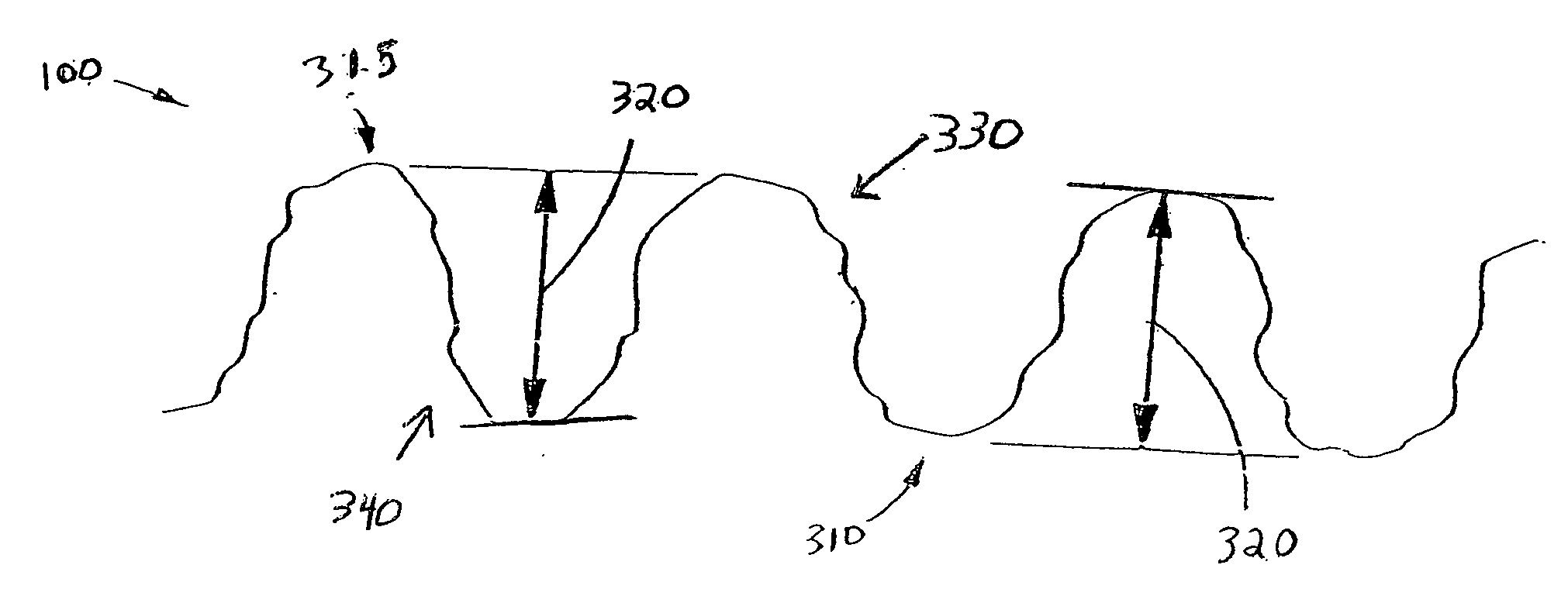Process for high engagement embossing on substrate having non-uniform stretch characteristics
a web material and high engagement technology, applied in the direction of press section, non-fibrous pulp addition, patterned paper, etc., can solve the problems of reducing the quilted appearance and/or thickness benefit of the embossing, and affecting the effect of embossing quality
- Summary
- Abstract
- Description
- Claims
- Application Information
AI Technical Summary
Benefits of technology
Problems solved by technology
Method used
Image
Examples
example 1
[0067] One fibrous structure useful in achieving the embossed paper product of the present invention is the through-air-dried (TAD), differential density structure described in U.S. Pat. No. 4,528,239. Such a structure may be formed by the following process.
[0068] A Fourdrinier, through-air-dried papermaking machine is used in the practice of this invention. A slurry of papermaking fibers is pumped to the headbox at a consistency of about 0.15%. The slurry consists of about 55% Northern Softwood Kraft fibers, about 30% unrefined Eucalyptus fibers and about 15% repulped product broke. The fiber slurry contains a cationic polyamine-epichlorohydrin wet burst strength resin at a concentration of about 10.0 kg per metric ton of dry fiber, and carboxymethyl cellulose at a concentration of about 3.5 kg per metric ton of dry fiber.
[0069] Dewatering occurs through the Fourdrinier wire and is assisted by vacuum boxes. The wire is of a configuration having 41.7 machine direction and 42.5 cro...
example 2
[0074] In another embodiment of the embossed paper products of the present invention, the deep nested embossing process of Example 1 is modified such that the paper of Example 1 is conditioned with steam before it is delivered to the embossing cylinders. The resulting paper has an embossment height of greater than about 1450 μm.
example 3
[0075] In another embodiment of the embossed paper products, two separate paper plies are made from the paper making process of Example 1. The two plies together have a MD stretch of 24% and a CD stretch of 13%. The two plies are then combined and embossed together by the deep-nested embossing process of Example 1. The resulting paper has an embossment height of greater than about 1000 μm.
PUM
| Property | Measurement | Unit |
|---|---|---|
| depth | aaaaa | aaaaa |
| height | aaaaa | aaaaa |
| height | aaaaa | aaaaa |
Abstract
Description
Claims
Application Information
 Login to View More
Login to View More - R&D
- Intellectual Property
- Life Sciences
- Materials
- Tech Scout
- Unparalleled Data Quality
- Higher Quality Content
- 60% Fewer Hallucinations
Browse by: Latest US Patents, China's latest patents, Technical Efficacy Thesaurus, Application Domain, Technology Topic, Popular Technical Reports.
© 2025 PatSnap. All rights reserved.Legal|Privacy policy|Modern Slavery Act Transparency Statement|Sitemap|About US| Contact US: help@patsnap.com



